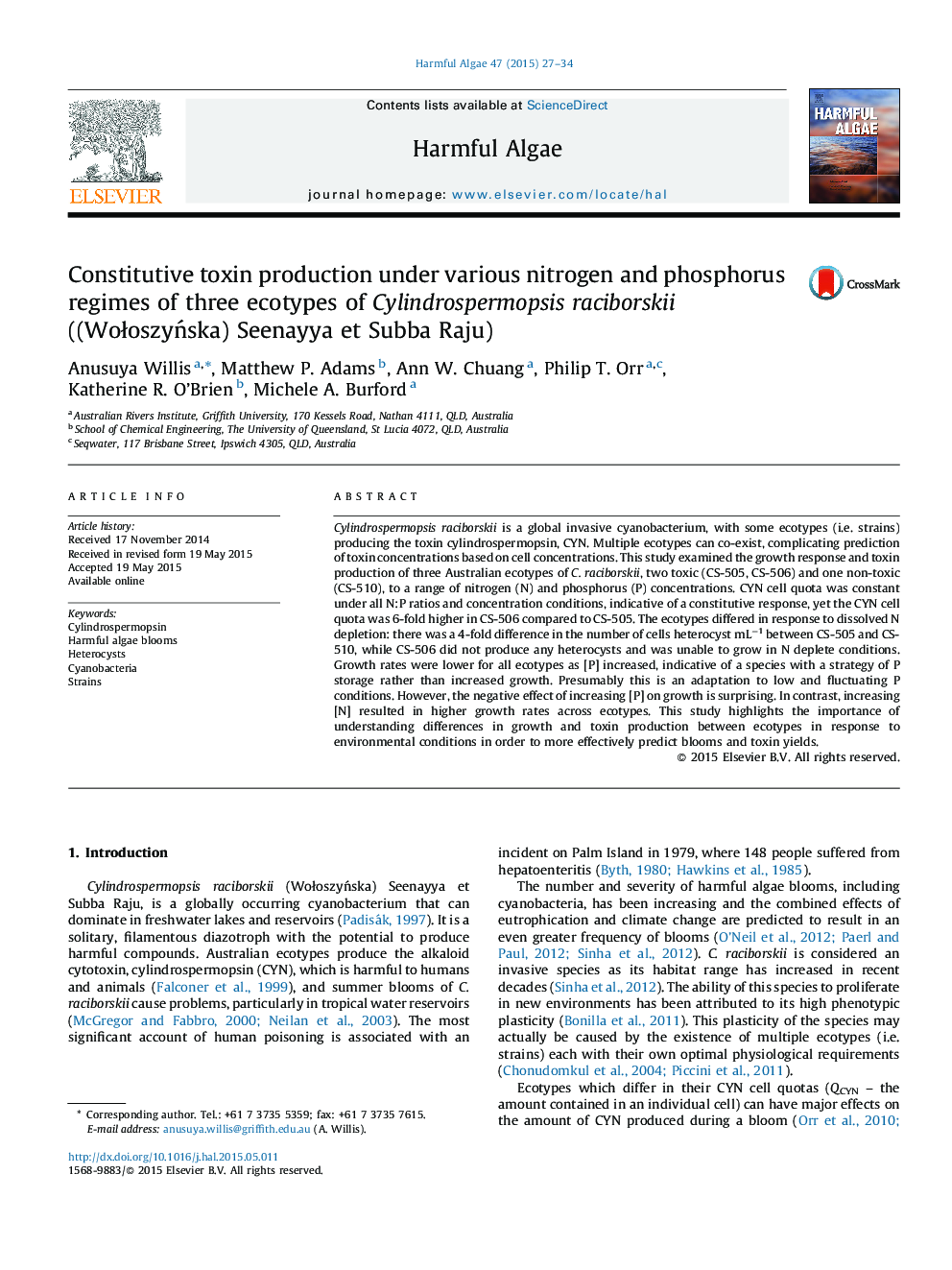| Article ID | Journal | Published Year | Pages | File Type |
|---|---|---|---|---|
| 6386177 | Harmful Algae | 2015 | 8 Pages |
Abstract
Cylindrospermopsis raciborskii is a global invasive cyanobacterium, with some ecotypes (i.e. strains) producing the toxin cylindrospermopsin, CYN. Multiple ecotypes can co-exist, complicating prediction of toxin concentrations based on cell concentrations. This study examined the growth response and toxin production of three Australian ecotypes of C. raciborskii, two toxic (CS-505, CS-506) and one non-toxic (CS-510), to a range of nitrogen (N) and phosphorus (P) concentrations. CYN cell quota was constant under all N:P ratios and concentration conditions, indicative of a constitutive response, yet the CYN cell quota was 6-fold higher in CS-506 compared to CS-505. The ecotypes differed in response to dissolved N depletion: there was a 4-fold difference in the number of cells heterocyst mLâ1 between CS-505 and CS-510, while CS-506 did not produce any heterocysts and was unable to grow in N deplete conditions. Growth rates were lower for all ecotypes as [P] increased, indicative of a species with a strategy of P storage rather than increased growth. Presumably this is an adaptation to low and fluctuating P conditions. However, the negative effect of increasing [P] on growth is surprising. In contrast, increasing [N] resulted in higher growth rates across ecotypes. This study highlights the importance of understanding differences in growth and toxin production between ecotypes in response to environmental conditions in order to more effectively predict blooms and toxin yields.
Related Topics
Life Sciences
Agricultural and Biological Sciences
Aquatic Science
Authors
Anusuya Willis, Matthew P. Adams, Ann W. Chuang, Philip T. Orr, Katherine R. O'Brien, Michele A. Burford,
